A long time ago, on a podcast far, far away…!
Seven Years, Dozens of Experts
Since that day, I have been incredibly honored to have dozens of experts as my guests on the podcast. These incredible folks have helped me teach the essentials of Transfusion Medicine to learners everywhere, and I am so grateful for all of them (and each of you!).
A Celebration Episode!
To honor seven years of learning, I’ve invited 8 previous guests (and one “rookie”) to join me in a special “Pearls of Wisdom” episode. Each guest shares about a five minute, compact nugget of information that learners can use in practical ways. Enjoy, and please come back soon for more episodes of Blood Bank Guy Essentials!
Seven Years, Dozens of Experts
Since that day, I have been incredibly honored to have dozens of experts as my guests on the podcast. These incredible folks have helped me teach the essentials of Transfusion Medicine to learners everywhere, and I am so grateful for all of them (and each of you!).
A Celebration Episode!
To honor seven years of learning, I’ve invited 8 previous guests (and one “rookie”) to join me in a special “Pearls of Wisdom” episode. Each guest shares about a five minute, compact nugget of information that learners can use in practical ways. Enjoy, and please come back soon for more episodes of Blood Bank Guy Essentials!

About My Guests:
Here are the nine guests, in the order they speak in this episode:
- Steve Frank, MD
- Sue Johnson, MSTM, MT(ASCP)SBBCM
- Cassandra Josephson, MD
- Mark Fung, MD
- Yulia Lin, MD
- Mark Yazer, MD
- Connie Westhoff, PhD
- Chris Tormey, MD
- Nancy Dunbar, MD
FREE Continuing Education!
This podcast episode offers a FREE continuing education activity where you can earn two different types of credit: 1 AMA PRA Category 1 CreditTM, or 1 ASCLS P.A.C.E.® Contact Hour (including Florida Clinical Laboratory Credit). This activity also may be used to fulfill Lifelong Learning Continuing Certification requirements for the American Board of Pathology.
To receive credit and review the accreditation information and related disclosures, please visit Transfusion News Continuing Education on Wiley Health Learning.
Please note: Continuing education credit is available for two years from the date this episode was released. In other words, you will no longer be able to claim credit for this episode after March 28, 2025.
Music Credit
Music for this episode includes “Cuando te invade el temor” and “Reflejo,” both by Mar Virtual via the Free Music Archive. Click the image below for permissions and license details.




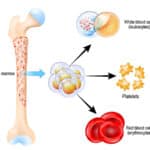

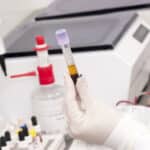



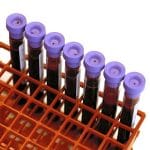

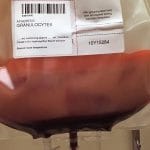
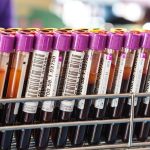
I am very grateful to you for this resource, it is incredible and it’s obviously made with love to the field of blood transfusion, followers and subscribers. I am a real fan of it now as many complicated issues have been resolved due to this website. Thank you! Wish you good luck!
Thank you so much, Anna. I love contributing in any way I can to help people learn, so I’m grateful and honored that this site might have helped you. I appreciate you taking the time to write to me.
-Joe
Joe, congratulations on your 100th episode!
I had a comment related to your discussion with Dr Lin regarding the importance of context when interpreting abnormal lab results. We don’t often check coagulation studies in patients on DOACs (because we don’t need to). As a result I believe there is an underappreciation of the fact that DOACs actually do alter coagulation testing. I frequently see patients on DOACs presenting with bleeding. An INR is obtained as part of the evaluation. When the INR is prolonged clinicians (often) don’t connect this to DOAC use. They often look for other explanations for this finding and/or prescribe FFP. FFP is not indicated or helpful for DOAC-associated coagulopathies.
Thanks so much!
Bruce Jobe
Hey Bruce! Insightful and accurate comment, as always. I think too much plasma gets used in ways that don’t make sense, and that is a great example.
-Joe
Congratulations on the 100th episode.
If I may ask a question. Does irradiation have similar effect on the DNA of pathogens in a bag of platelets as it does on the DNA of lymphocytes? how does irradiated platelets compare to pathogen reduced ones in terms of safety and transmission of pathogens?
Thank you,
Raja
Hi Raja,
The answer is a really BIG NO! The dosage of irradiation we use in the US (25 Gy targeted to the middle of the component, with at least 15 Gy to all parts) is insufficient to sterilize anything, so an irradiated unit of platelets is in no way equivalent to a pathogen-reduced unit in terms of prevention of transmission of pathogens. Easiest way to think about blood component irradiation is that it “zaps them” just enough to deactivate the T-lymphocytes, but not enough to do much else (aside from some damage to the RBC membrane resulting in potassium leakage). I hope that helps!
-Joe
a bit confused about letting sample sit in saline and DAT. Techs are told to use saline crossmatch with warm auto patients. The cells are sit in saline for half an hour. Not good to attach antibodies to the cells? or are we talking about two different things? If the antibodies are leaving the red cells while sitting in saline, why should they attach to red cells in crossmatch? Even though i always do all the procedures in one sitting, the only thing mentioned in DAT SOP is to read immediately after centrifuge.
Thanks for this excellent podcast. I’m a hospitalist at a teaching hospital and I find myself coming here regularly and always find new ideas and helpful ways to explain older concepts to our residents.
Given your influence in the tranfusion medicine world, I was hoping you and your listeners and guests can join me in getting a rebranding campaign off the ground–I HATE the use of the terms “restrictive” and “liberal” for tranfusion policies. “Restrictive” sounds like a strict, stingy prison warden who’s implementing a “no-seconds” rule in the cafeteria, whereas “liberal” sounds like your fun aunt who treats you to the extra-large popcorn at the movies.
I propose rebranding restrictive to a “responsible” or “optimal” transfusion policy, and rebranding liberal as “irresponsible” or “overtransfusion.” Whaddya think??
Hi Kim. Thanks for writing and for the kind words! I too am no fan of the “restrictive” vs. “liberal” verbiage, but I’m afraid it’s too hard-wired into the language, going back at least to the TRICC trial reported in NEJM in 1999. Truth be told, I can’t get anyone to stop saying anything in the blood bank! If I could, no one anywhere would be using the silly phrase “least incompatible” anymore!
-Joe
Hi, Joe. I’m a nurse practitioner in the Hemovigilance Unit at a major academic cancer center. I cannot tell you how helpful your podcasts are in navigating this very unique role. Thank you!
Very nice Joe. Congratulations on your 100th!